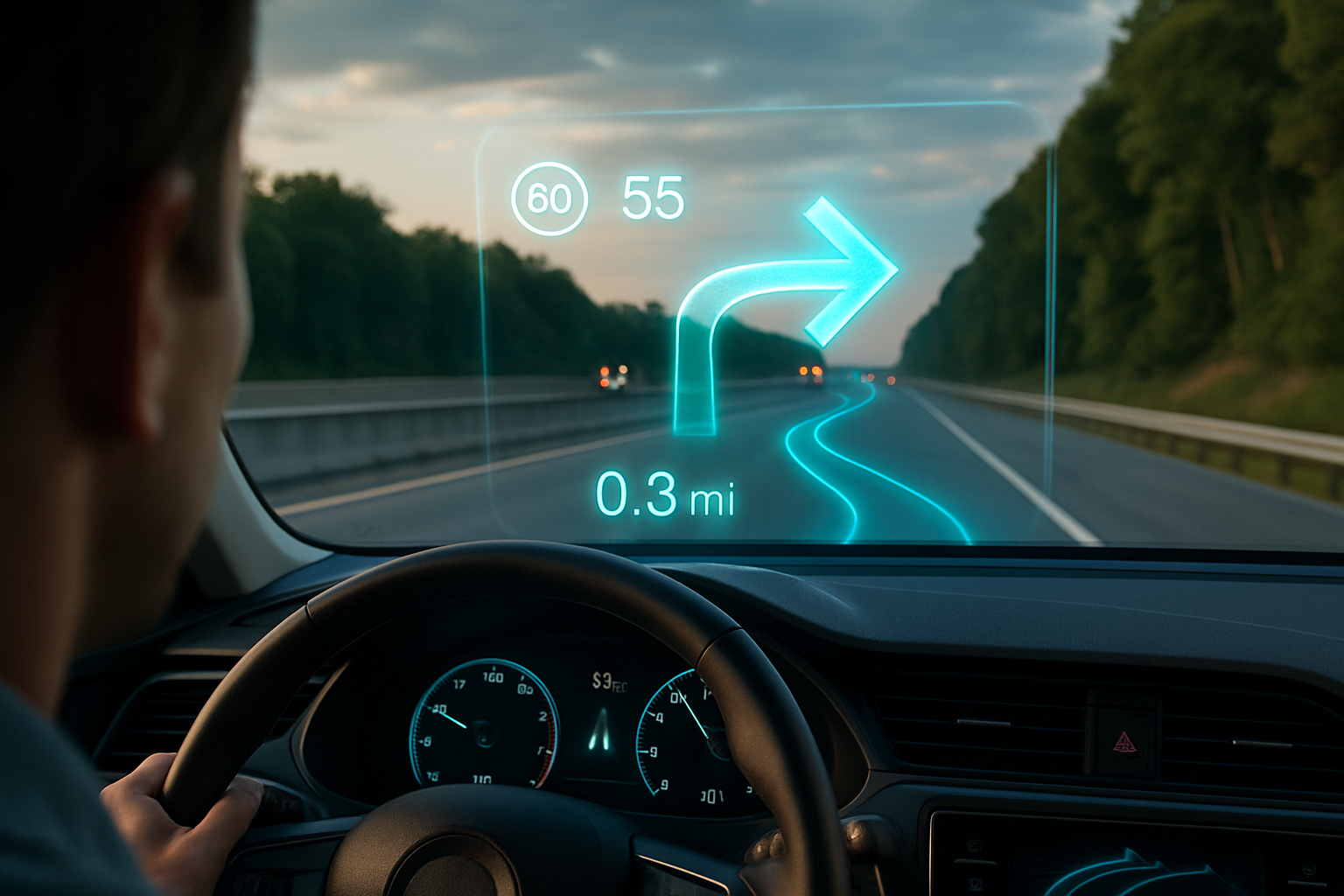Holographic Head-Up Displays: The Future of Automotive Information Projection
Imagine cruising down the highway, your eyes focused on the road ahead. Suddenly, a vibrant, three-dimensional image appears to float in the air before you, displaying your speed, navigation directions, and critical vehicle information. This isn't science fiction – it's the cutting-edge world of holographic head-up displays (HUDs), poised to revolutionize how drivers interact with their vehicles and the road.

The Evolution of In-Car Information Display
The journey to holographic HUDs began decades ago with simple analog gauges. As automotive technology advanced, digital displays emerged, offering more precise readings and customization options. The first head-up displays appeared in high-end vehicles in the 1980s, projecting basic information onto the windshield.
These early HUDs were limited in scope and often difficult to read in varying light conditions. However, they laid the groundwork for more sophisticated systems. As projection technology improved, so did the quality and quantity of information that could be displayed. Today’s conventional HUDs can show a wide range of data, from speed and fuel levels to navigation cues and safety alerts.
Enter the Hologram: A New Dimension in Display Technology
Holographic HUDs take this concept to an entirely new level. Unlike traditional HUDs that project a flat image onto the windshield, holographic systems create the illusion of a three-dimensional display floating in space before the driver. This is achieved through a combination of advanced optics, high-resolution projectors, and sophisticated software algorithms.
The key advantage of holographic HUDs is their ability to present information in a more intuitive and less distracting manner. By utilizing depth and perspective, these systems can organize data in layers, allowing drivers to focus on the most critical information while keeping other details within easy reach.
The Technology Behind the Magic
At the heart of holographic HUDs are several key technologies working in concert. High-intensity laser projectors create the base image, which is then passed through a series of precision-engineered optical elements. These elements shape and focus the light, creating the illusion of a three-dimensional object floating in space.
Advanced eye-tracking systems ensure that the holographic image remains stable and in focus regardless of the driver’s head position. This is crucial for maintaining the illusion and preventing eye strain or disorientation. Additionally, sophisticated software continuously adjusts the display based on ambient light conditions, vehicle speed, and other factors to ensure optimal visibility and readability.
Applications and Advantages in Modern Vehicles
Holographic HUDs offer numerous advantages over traditional display methods. By projecting information directly into the driver’s line of sight, they minimize the need to look away from the road. This can significantly reduce reaction times in critical situations, potentially improving overall safety.
The three-dimensional nature of holographic displays allows for more creative and intuitive information presentation. For example, navigation instructions can be displayed as floating arrows that appear to hover over the actual road ahead, making it easier for drivers to understand and follow directions.
These systems can also integrate with other vehicle technologies, such as adaptive cruise control and lane departure warnings, to provide real-time visual feedback. Imagine seeing a glowing outline around vehicles in your blind spot or a floating barrier line indicating safe following distances.
Challenges and Future Developments
Despite their potential, holographic HUDs face several challenges before widespread adoption. The technology is still relatively expensive, limiting its use to high-end vehicles. There are also concerns about the potential for information overload and driver distraction if not implemented thoughtfully.
Researchers and engineers are working to address these issues. Advances in micro-LED technology promise to reduce costs and improve brightness, while artificial intelligence algorithms are being developed to intelligently manage information flow based on driving conditions and driver preferences.
Looking ahead, the integration of augmented reality (AR) with holographic HUDs opens up exciting possibilities. Future systems could overlay real-time information onto the actual world view, highlighting potential hazards, displaying points of interest, or even providing virtual driving instruction for novice drivers.
The Road Ahead for Holographic HUDs
As holographic HUD technology continues to mature, we can expect to see it become more prevalent in a wider range of vehicles. The potential benefits in terms of safety, convenience, and driver engagement are too significant to ignore.
However, the successful implementation of this technology will require careful consideration of human factors and interface design. Striking the right balance between providing useful information and avoiding distraction will be crucial.
As we move towards an increasingly connected and automated automotive future, holographic HUDs have the potential to become a central element of the human-machine interface in vehicles. By providing drivers with intuitive, immersive access to critical information, they promise to enhance both the safety and enjoyment of the driving experience.
The road ahead for holographic HUDs is bright and full of potential. As this technology continues to evolve, it will undoubtedly play a significant role in shaping the future of automotive information display and driver interaction. Buckle up – the view from the driver’s seat is about to get a lot more interesting.





